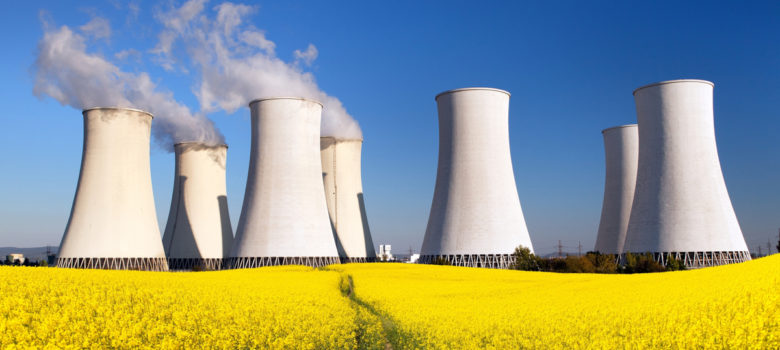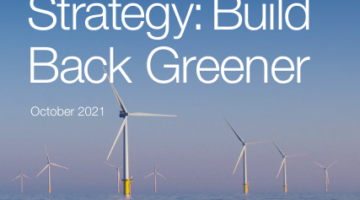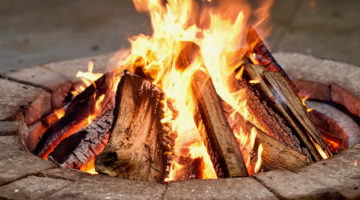
Here at the GreenAge we’re all about clean, renewable energy and making the world a better place, so it may surprise you to know that we’re not staunchly against nuclear energy. But wait, doesn’t nuclear waste harm the environment? Isn’t nuclear power expensive? Aren’t nuclear plants dangerous? GreenAge, are you crazy?!
These are all really good questions, so let’s discuss the answers.
What is nuclear power and how does it work?
Nuclear power is complicated because it creates energy at the atomic level. There are several different types of nuclear reactor – if you want a proper explanation of how and why we’re able to produce such vast amounts of energy from these radioactive elements, you can find it here. In laymans terms, we split atoms to create heat, which we use to boil water, which creates steam, that we use to turn turbines, and create electricity.
There is a lot of debate over whether nuclear power is a renewable energy source. Although there is a finite amount of uranium, the use of breeder reactors (which produce more fissile nuclear fuel than they consume) could push the fuel source into the realm of renewables. There are a lot of environmental and external factors that need to be taken into account too, with different people, legislation, and countries coming down on different sides of it.
How dangerous is nuclear power?
Industrial Nuclear Accidents
There is a huge amount of fear surrounding nuclear power, mostly based on the events at Chernobyl and, to a lesser extent, Fukushima. While the risks are very real and the effects can be lethal, sensationalism of the accidents has lead to a lot of misinformation and misunderstanding of the dangers of radiation. So if we dig into the numbers, just how dangerous is nuclear power really?
The disaster at Chernobyl is easily the most famous example of a nuclear power plant disaster. In the immediate aftermath of the accident, 28 people died from Acute Radiation Syndrome (ARS), and 160,000 people were estimated to have developed thyroid cancer. There’s no getting around the fact that that’s a huge number of people to develop a serious disease. That said, it is worth noting that thyroid cancer is one of the easiest forms of cancer to treat, with a survival rate of around 99%. That brings the combined death toll to 188. 188 people dear from one tragic event is an absolute travesty and a disaster, but let’s compare it to the human cost of other baseload generation plants.
The World Health Organisation (WHO) estimates that 7 million people are killed every year as a result of air pollution, the vast majority of which is caused by the burning of fossil fuels like coal, oil, and gas. In fact, according to the climate scientist James Hansen, nuclear power has thus far saved 1.8 million lives by producing clean energy and avoiding the use of fossil fuels. It’s a striking idea that nuclear power could actually be saving lives.
There’s also the issue of lasting effects of the nuclear fallout, but these too may not be what we think. There is no evidence of the events of Chernobyl affecting fertility, still births, birth malformations, or any kind of cancer other than thyroid.
In fact, perhaps of the most dangerous things about nuclear radiation is the disproportionate panic it creates. When the plant at Fukushima failed in 2011 following an earthquake and subsequent tsunami, not a single person died from radiation exposure. The panic over the radiation, however, caused the Japanese government to evacuate thousands; a decision that caused the death of 1,500 people.
Weaponising Nuclear Power
Nuclear weapons have been a global fear for a long time now. With nuclear bombs now thousands of times more powerful than those dropped on Hiroshima and Nagasaki, and world leaders appearing more willing than ever to threaten their use, it’s easy to see why the word ‘nuclear’ makes people uneasy. It’s a dangerous world we’re living in, and embracing a technology that can be adapted for war might seem inescapably naive.
That said, since the late 60’s and the instigation of the Treaty on the Non-Proliferation of Nuclear Weapons, there has been a precedent set that countries wanting nuclear power have to prove that these capabilities won’t be weaponised. This essentially forces nations to choose between energy production and military power, theoretically creating a much safer world with the more nuclear-energy capable countries we see.
Michael Shellenberger gives a good example of this system, citing Korea as a prime example of how it can work. Both South and North Korea were keen to develop nuclear power plants, however for a number of good reasons, North Korea was denied this option and South Korea was granted it. Due to having nuclear power plants, South Korea currently has no known nuclear weapons. On the other hand, North Korea, who were denied nuclear energy and therefore did not have to prove themselves to the same standards, now have nuclear weapon capabilities and the intent to use them. While many factors are at play in this comparison, it’s certainly an example worth considering.
Another interesting part of the debate about the potential of using nuclear energy as a weapon is terrorism. Unlike all other nations in the non-proliferation treaty, the UK is one of 5 countries allowed both nuclear energy and nuclear weapons. While it’s certainly true that nuclear technology can be devastatingly deadly in the wrong hands, it must be considered that we already have a stockpile of 120 active nuclear warheads (215 total). If our fear of nuclear energy is that it might be turned into a nuclear weapon, then we may need to address these hundreds of actual nuclear weapons first.
How bad is nuclear power for the environment?
The process of creating energy from nuclear reaction produces very little in way of harmful emissions. The problem is that when a nuclear reactor comes to the end of its life, it has the potential to cause serious harm to the environment if not dealt with properly.
In the UK, our biggest problem is where to store our nuclear waste. Despite 70 years of nuclear power in this country, and substantial financial incentives offered by the government, we still have no permanent dump site. That’s undestandable – after all, who wants to live next to a nuclear waste site?
At the moment most of our high-level radioactive waste is stored in Sellafield, Cumbria, in high-integrity stainless steel tanks. The materials are put in water fitted with cooling coils, and kept there for 50 years to allow the heat to dissipate to manageable levels. After that, we dispose of them deep down in the earth. It costs a lot of money, but it’s vital to ensure that the nuclear waste will be isolated from the surface for thousands of years. With a timescale that long, a lot of people worry about how safe our future really is from the nuclear waste that we bury. Nuclear supporters argue that, unless we adopt a global radical change in how we generate energy, we’re unlikely to live long enough for that problem.
What does the GreenAge think about nuclear power?
There are quite a few of us here at the GreenAge, and we’ve all got a lot of different opinions about nuclear energy and what role it should play in the future of UK energy generation. To hear us discuss our ideas, check out our recent podcast, where we debate some of the issues raised here and generally talk everything nuclear.
Think we missed something? Do you have a different opinion?
Comment below to get your voice heard…












Thorium reactors,one worked in the USA with some pipe corrosion issues, Currently being developed in India and China may be justifiable as they can run on existing nuclear waste however although the waste is much reduced in volume after being used it is very highly toxic. Only Finland has a long term solution of deep burial in an old mine this questionable as dealing with any problems after burial will be very difficult. Wind solar and battery development and more efficient use has to be the way to go. A super grid of solar power electrical generation from North Africa fed to Europe has to better than the expensive nonsense of failed french technology being built on the UK South coast. The Severn estuary tidal energy option would also contribute with a welcome boost to the Welsh economy. Follow the money vested interests are clearly negatively at work at present!
Interesting read! It’s incredible how much the anti-nuclear lobby has misdirected people! The self righteousness of the renewable energy fanatics and the influence of the oil and gas lobby! Nuclear is the ONLY WAY to stop climate change!!!
Interesting hearing you guys talk about it, and reading the article. Not sure about some of the numbers quoted, but overall the arguments seem sound.
thanks for the info!
thorium is the way forward! there is no nuclear future in anything else! horribly misunderstood technology, but thorium is our future.
Oops. You’re hopelessly off track with the topics you raised. I am a former member of a nuclear development team and I would be open to discussing why nuclear power is no solution to climate change.
A fair analysis of the subject and arguably a most definite alternative to the mainstream Wind and Solar. proponents.
Good article. Nuclear – only ‘Green’ way to go.